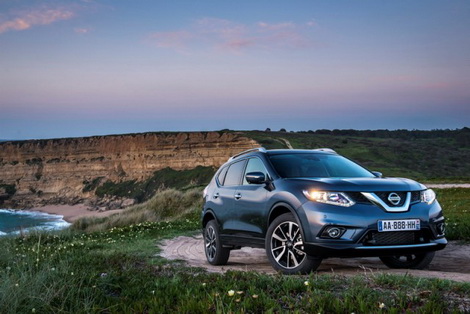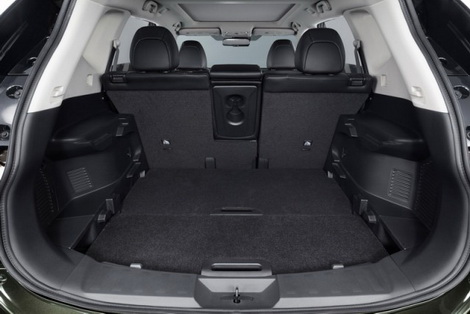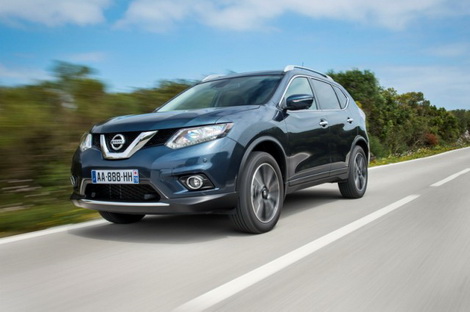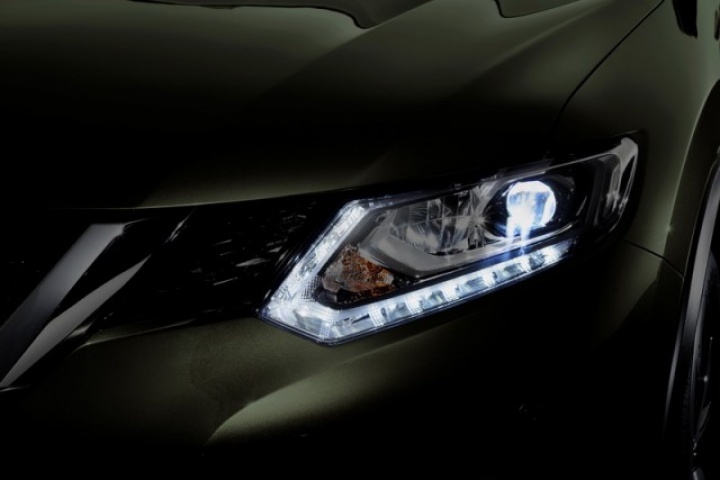Overall rating: 3.5/5
Nissan's new X-Trail is bigger, more refined and better equipped than before. Thanks to a downsized engine it is also cheaper to run, but is it in really an X-Trail or more a Qashqai XL?

In the metal 3/5

X-Trails of old were never the most interesting vehicles. Slab-sided and rugged, they had a cult following but never really the mainstream success of Nissan's most recent offerings. Cult cars do not equal big profits however, so Nissan has gone back to the drawing board and reimagined the X-Trail as a crossover rather than old-school SUV. There is more than a touch of Qashqai to the looks, so much so that you would do well to pick out an X-Trail when it drives past you; though get the two cars together and the X-Trail is undoubtedly bigger. It rides higher, is a full 100mm longer and has a higher roofline than its more famous brother. Yet despite all that the new car is only marginally bigger than the one it replaces so takes up nearly the same space on the road.

Where it is bigger than before is between the axles; 76mm longer to be exact, which, combined with a reshaping of the seats, means an extra 100mm overall for rear seat passengers. Stick a six-footer up front and the person behind them will still have enough space to stretch their legs. But only if you stick with the five-seat model. Opt for the seven-seat version, which effectively replaces the Qashqai+2 in Nissan's line-up, and rear seat occupants are short-changed. To accommodate passengers in the third row those in the middle have to slide their seats forward to a point where legroom is best described as 'cosy'. Still more generous than experienced by those in the very back though. This is certainly a 5+2 rather than a full-fat seven-seater.

Plus if you opt for the third row of seats you miss out on one of the X-Trail's party tricks, which is its dividable boot. We have seen this in the Qashqai of course but with the extra space offered by the X-Trail (410- vs 550 litres) the clever multi-height floor is more useful. The seats too have multiple configurations including an uninterrupted flat floor from the tailgate to the dashboard, so bigger loads are not a problem.

Anyone who has driven the new Qashqai will feel instantly at home in the X-Trail as the interior has been lifted wholesale from it, bringing both its good and bad sides. The quality and fitment are certainly high, as too is the ambience (especially with the panoramic tilt and slide roof), but the seats are too hard and too flat to offer any sort of support and are may become tiresome over longer journeys.
Driving it 3/5
Unlike the Qashqai, which has to make do with torsion beam suspension on cheaper models, the X-Trail has a multi-link set up. This, in conjunction with the Active Ride Control that uses engine braking to reduce oscillations over particularly bumpy roads, means that the X-Trail dismisses bumps easily, even on the 19-inch wheels of our test car.

Yet in spite of this, and despite the Qashqai-like looks, it does not handle like its little brother. It handles like an SUV with body roll and little engagement or feel through the wheel rather than the slightly-jacked up hatchback feel of the Qashqai. Considering the shared architecture between the two cars it is somewhat surprising - even more so when the road-biased 'crossover' styling is taken into consideration.

Where it does excel however is on the technology front. We drove both the 4x4 six-speed manual X-Trail and also a front-wheel drive version fitted with the 'X-Tronic' CVT automatic and were impressed with both. In normal driving the four-wheel drive car only sends power to the front wheels to cut down on fuel consumption, but should the sensors detect slippage up to 50 per cent of power can be sent rearwards. You can also lock in four-wheel drive for more challenging conditions. The X-Tronic system is one of the best CVT (Continuously Variable Transmission) units we have tested from a non-premium manufacturer purely down to its dual personality. Around town it operates as a regular, seamlessly smooth CVT but ask for more power and a series of 'stepped' gears are introduced meaning there is no more hanging around the redline as you get up to motorway speeds, it instead 'changing up' like a regular automatic.
Whether manual, CVT, front- or four-wheel drive there is but one engine to choose from for the moment, a 130hp 1.6-litre DCi diesel. This downsized unit replaces the old 150hp 2.0 diesel offered in the previous generation X-Trail, but fear not towing fans (as the X-Trail has quite a lot apparently) as the unit offers the same 320Nm of torque as before and the car has a towing capacity of two tonnes. Acceleration can feel somewhat lethargic, with an egg-timer rather than a stopwatch used to time its 11-second 0-100km/h 'dash' (despite the new car having shed 90kg), but mid-range grunt more than makes up for the X-Trail's tardiness off the line and overtaking present no issue.

If you are interested in a petrol X-Trail a 1.6-litre DiG-T model will arrive next year.
What you get for your money 4/5
No official word on Irish pricing and specifications at the time of writing, but there are suggestions that the X-Trail range will kick off somewhere between the price of the Qashqai+2 that it... err does not officially replace and the old X-Trail, which were priced at circa €26,000 and €29,000 respectively. Trim levels are expected to mimic those of the Qashqai so XE, SV and SVE models will be on offer with entry-level cars likely to come equipped with 17-inch alloy wheels, manual air conditioning, a multi-function steering wheel and cruise control. SV models will likely add front fog lights, keyless entry, dual-zone climate control, roof rails and 19-inch alloys. Range topping SVE X-Trails should feature NissanConnect with its access to Google and Facebook etc, the 360-degree camera system, part leather seats and a panoramic glass roof.

Worth Noting
As Nissan has shown with the likes of the Note, Juke and Qashqai it can load a lot of safety tech into its cars, most of it coming under the 'Safety Shield' umbrella. These technologies include a 360-degree camera with moving object warning, lane departure warning, blind spot monitoring and city braking. Now buyers can add 'Active Trace Control' to that list. Basically a cornering aid, it monitors speed and steering input and can trim the car's line through a bend by braking the inside wheels to stop it from running wide rather than waiting for the loss of grip and waking up the traction control. It is remarkably effective, primarily because it is so unobtrusive. Unless you are intentionally seeking it out, it just feels as if you have taken the corner the way you had wanted rather than the way physics had dictated.

Summary
Nissan's new X-Trail is bigger and better than before but a less distinct offering. It has been homogenised and lost its individuality and character. Yet, by assuming the character of 'Qashqai XL' it will appeal to a broader audience and consequently should sell better. It does still feel like an opportunity missed however; here was Nissan - known for its recent innovation - given a blank slate for the X-Trail only to end up with what amounts to a bigger Qashqai.





























































